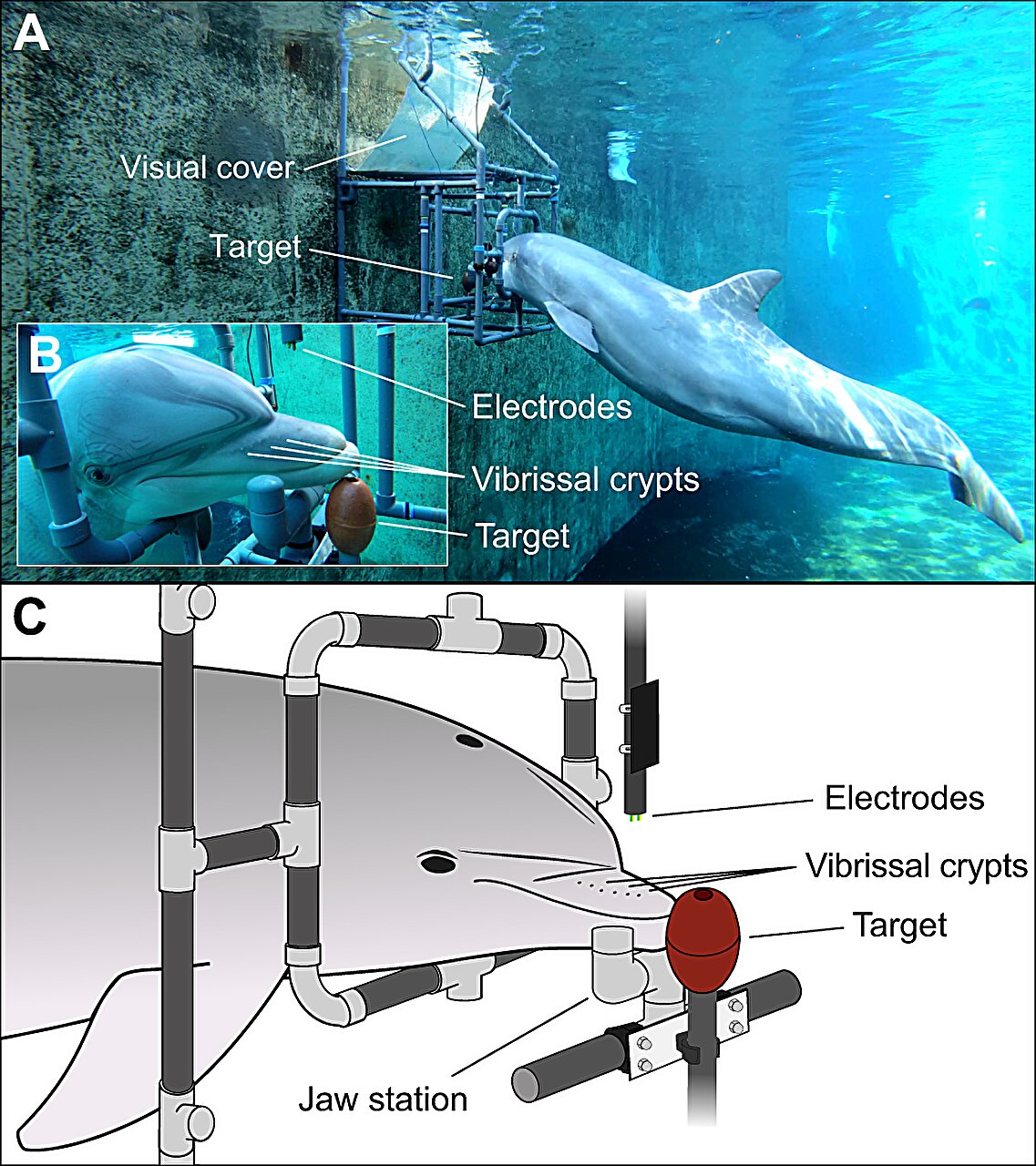A small team of bio-scientists from the University of Rostock’s Institute for Biosciences and Nuremberg Zoo’s Behavioral Ecology and Conservation Lab, both in Germany, has found evidence that bottlenose dolphins can sense electric fields. In their study, reported in the Journal of Experimental Biology, the group tested the ability of two captive bottlenose dolphins to sense a small electric field.
Many creatures in the animal kingdom are able to sense an electric field—some sharks and the platypus, for example—but only one type of marine mammal has been found to have the ability: the Guiana dolphin. In this new effort, the research team wondered if other types of dolphins have the ability.
They chose to study bottlenose dolphins for two reasons: a pair of were available for testing at the nearby Nuremberg Zoo, and prior research suggested that neural cells in the vibrissal crypts situated along the dolphins’ snouts strongly resembled the electric-field detectors observed in sharks.
The experiment the research team set up consisted of affixing a sensing device to the inside wall of a small tank of water. The sensing device consisted of a rack holding a red rubber target behind a metal bar. Just above the bar, the team placed an electrode capable of emitting small amounts of electricity. Running the experiment involved teaching the dolphins to rest their snout on the bar and to wait for a burst of electricity. If one appeared, they were taught to swim away. If not, they were expected to hold still for 12 seconds.
In running the experiment, the researchers observed that both dolphins were able to feel or sense the charge from the electrode. Additional testing showed that both were able to sense DC fields under 125 microvolts per centimeter with 90% accuracy. Both were also able to respond to electric pulses. The researchers suggest the ability to detect electric current likely helps bottlenose dolphins to detect and capture prey, and might also help them navigate using the Earth’s electric field.
More information:
Tim Hüttner et al, Passive electroreception in bottlenose dolphins (Tursiops truncatus): implication for micro- and large-scale orientation, Journal of Experimental Biology (2023). DOI: 10.1242/jeb.245845
© 2023 Science X Network
Citation:
Bottlenose dolphins can sense electric fields, study shows (2023, December 3)
retrieved 3 December 2023
from https://phys.org/news/2023-12-bottlenose-dolphins-electric-fields.html
This document is subject to copyright. Apart from any fair dealing for the purpose of private study or research, no
part may be reproduced without the written permission. The content is provided for information purposes only.
Denial of responsibility! TechCodex is an automatic aggregator of the all world’s media. In each content, the hyperlink to the primary source is specified. All trademarks belong to their rightful owners, and all materials to their authors. For any complaint, please reach us at – [email protected]. We will take necessary action within 24 hours.

Jessica Irvine is a tech enthusiast specializing in gadgets. From smart home devices to cutting-edge electronics, Jessica explores the world of consumer tech, offering readers comprehensive reviews, hands-on experiences, and expert insights into the coolest and most innovative gadgets on the market.


